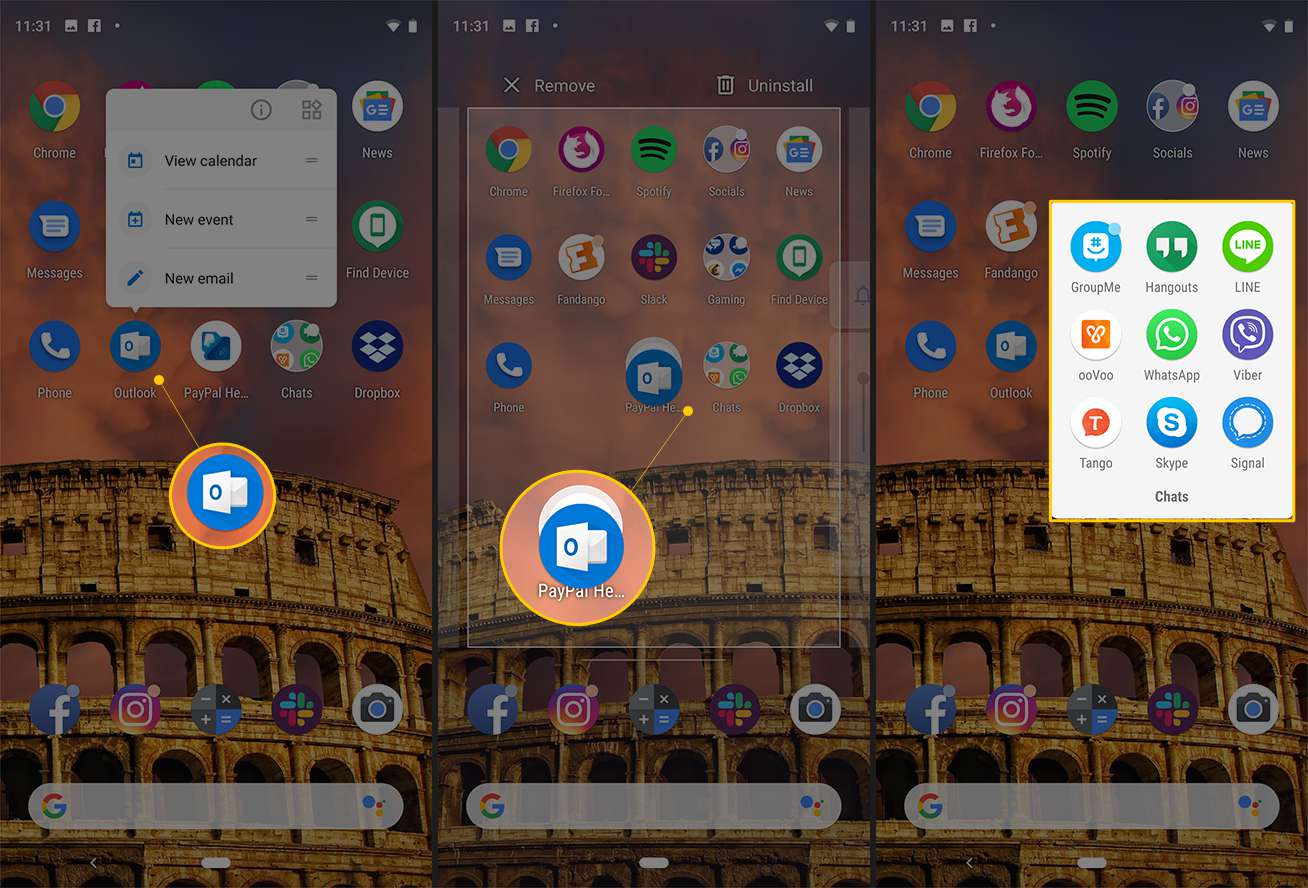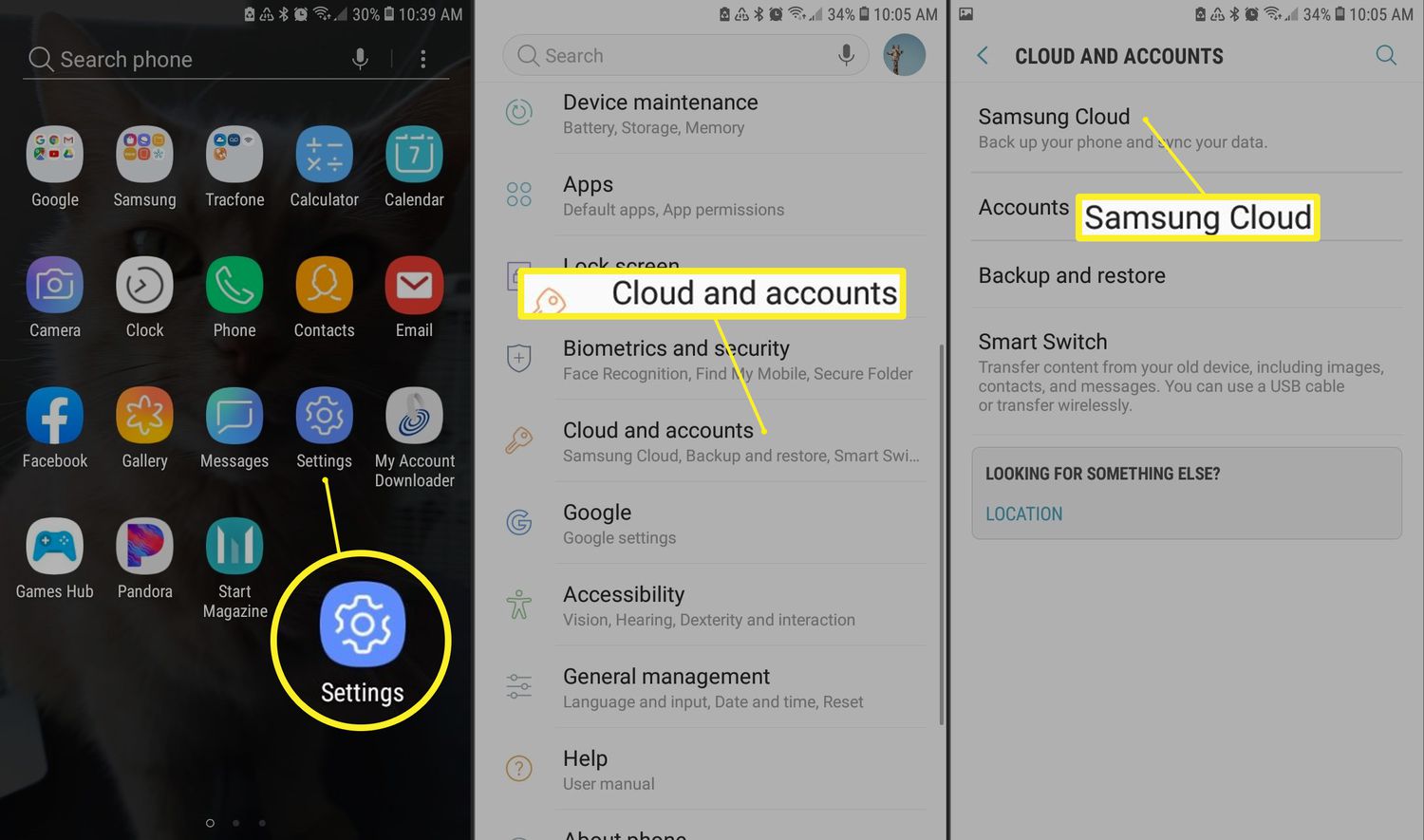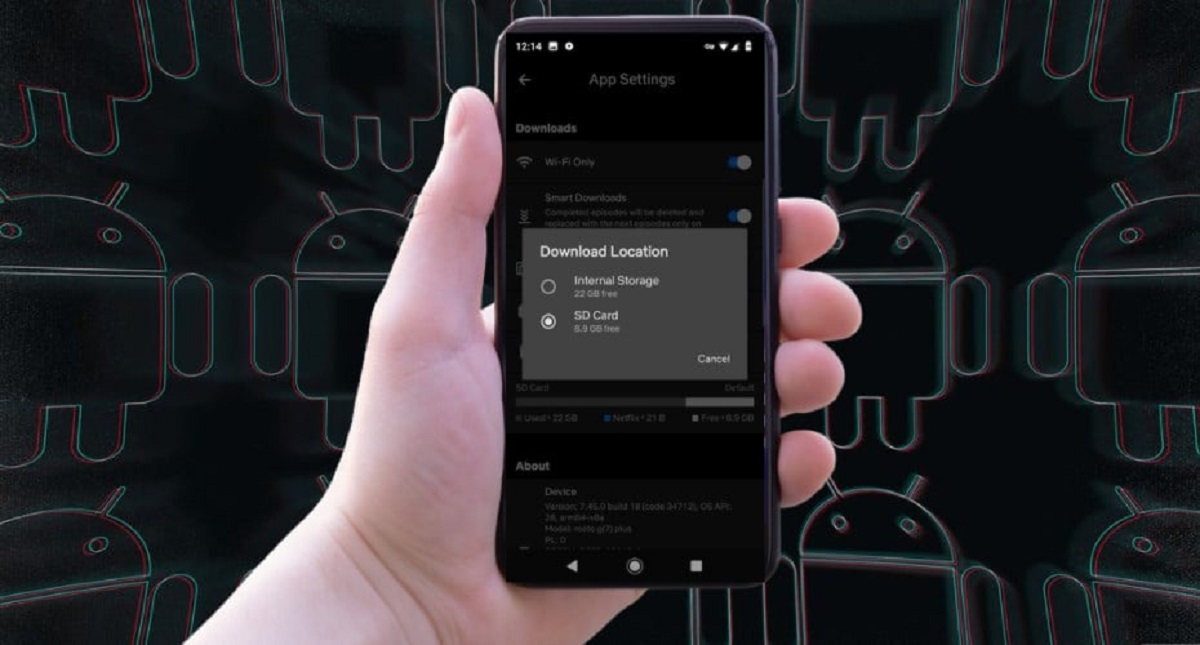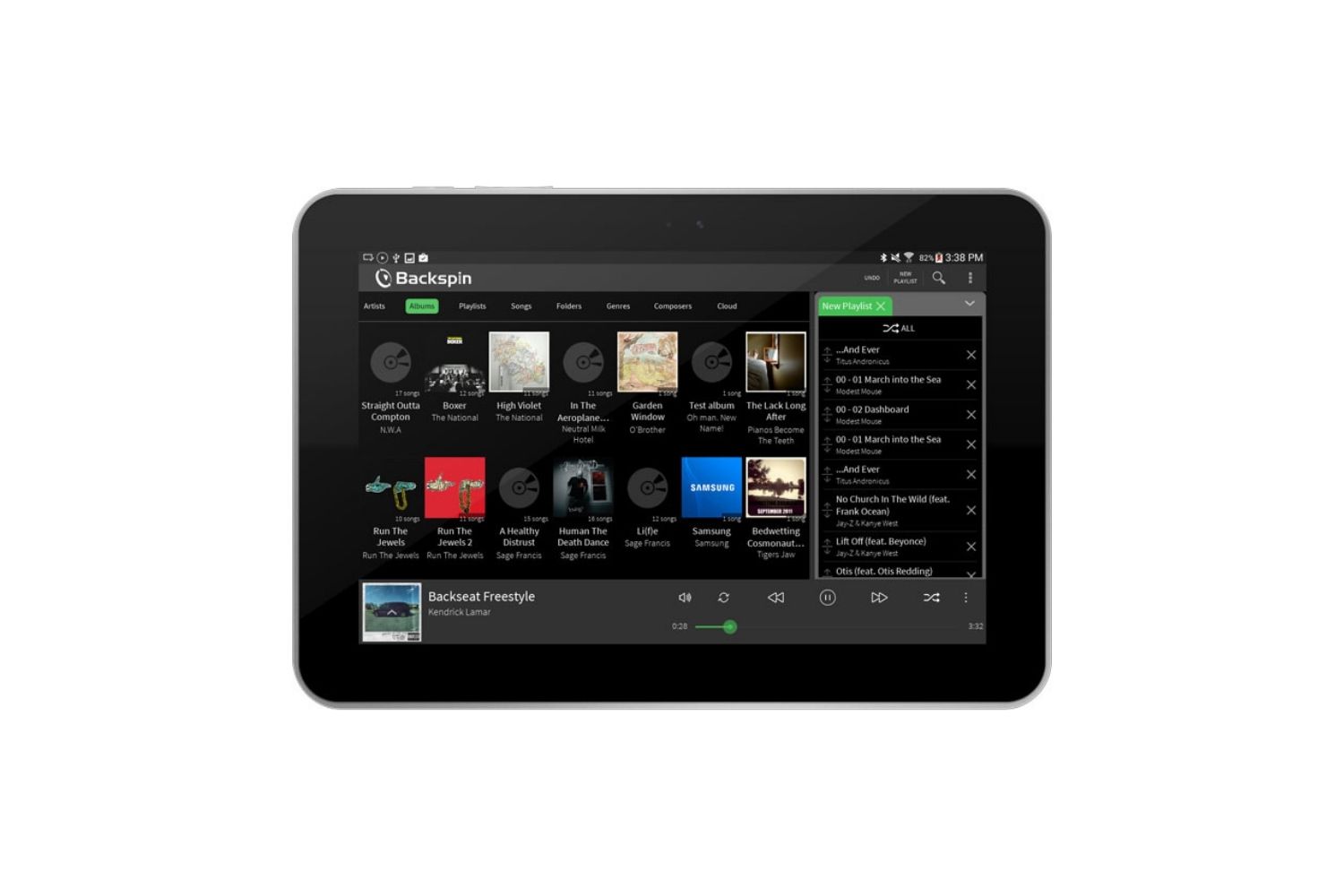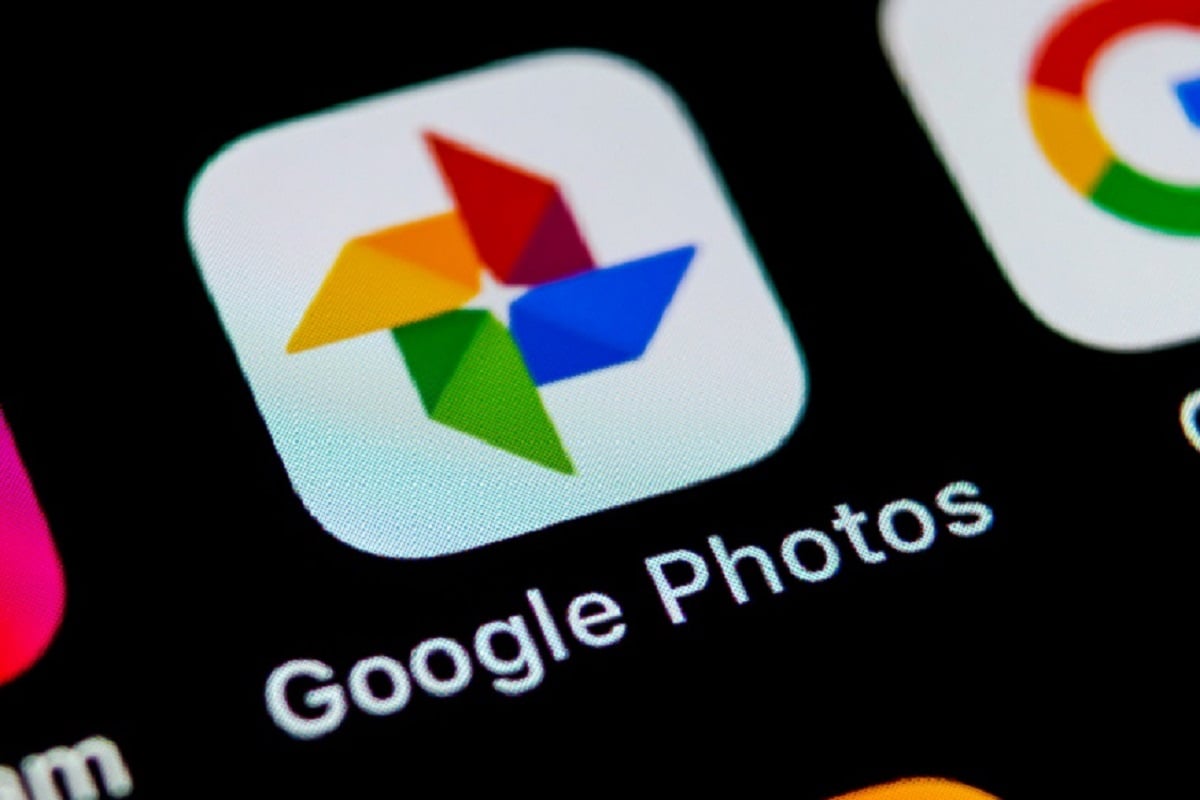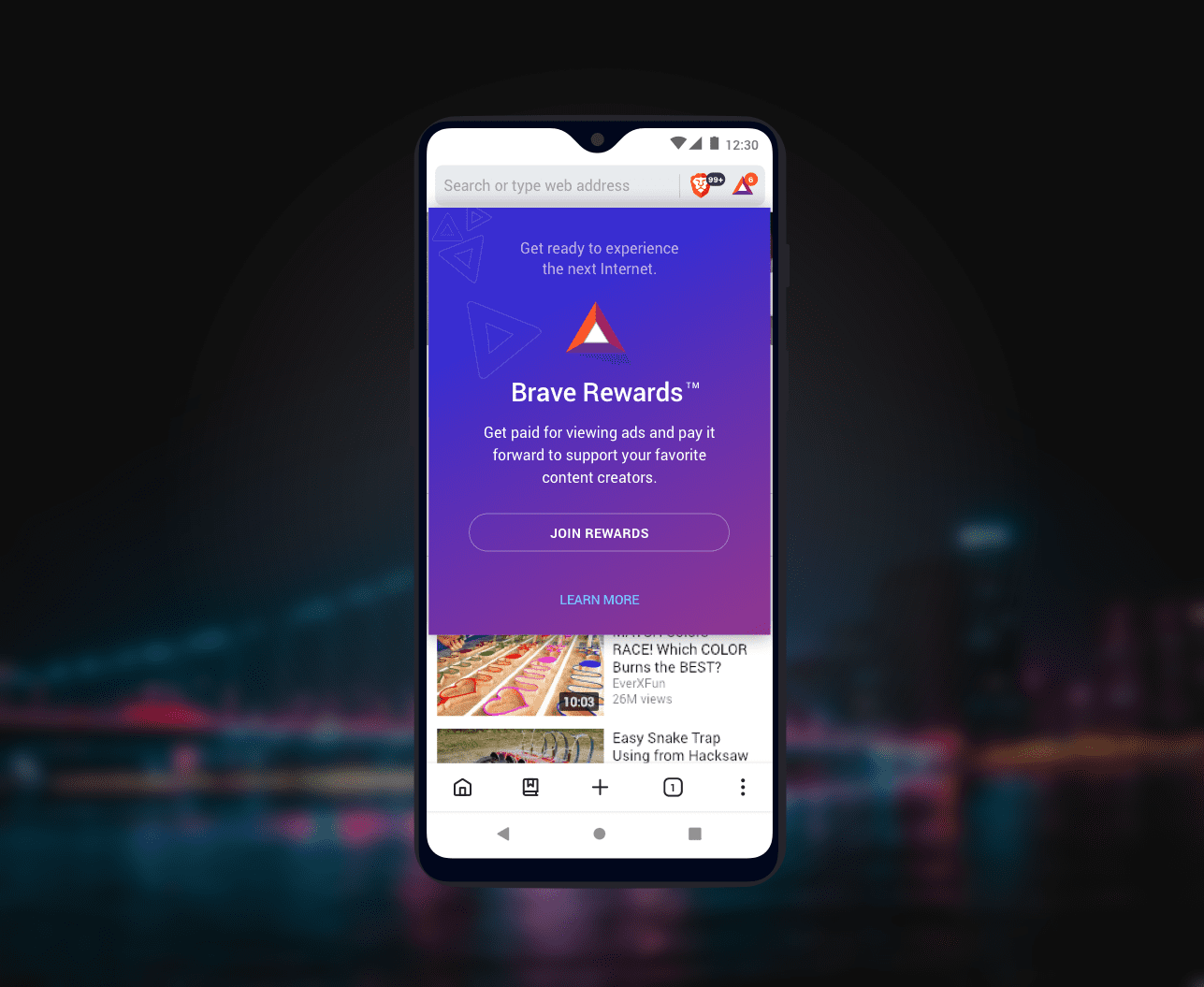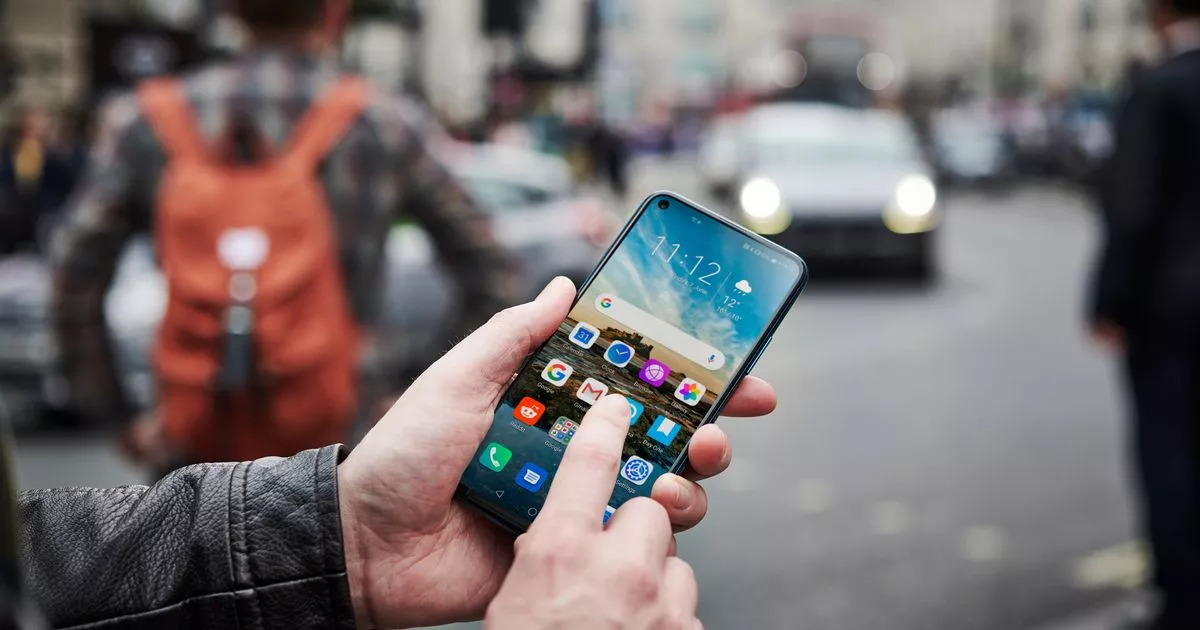Introduction
Android devices have become an integral part of our lives, serving as a hub for communication, entertainment, and productivity. With the ever-increasing amount of data and apps we store on our Android devices, it’s essential to keep things organized. One effective way to achieve this is by creating folders on your Android device.
While the default file manager on Android provides basic folder creation functionality, there are also third-party file manager apps available that offer more advanced features. Additionally, you can create folders directly on the home screen for quick and easy access to your most-used apps or files.
In this article, we will guide you through different methods of creating folders on Android, empowering you to declutter your device and streamline your digital life.
Let’s dive in and discover how to create folders on your Android device, whether you are using the default file manager, third-party apps, or the home screen.
Why Create Folders on Android?
As our Android devices become repositories of various apps, files, and documents, it’s easy for things to become disorganized and difficult to find. Creating folders on your Android device offers several benefits:
1. Organization and Ease of Access
By organizing your apps and files into folders, you can categorize them based on their type, purpose, or relevance. This allows for easy access and prevents the need to scroll through numerous screens or search for specific items.
2. Efficient Workflow
With folders, you can arrange your apps and files in a way that matches your workflow. For example, you can create separate folders for work-related apps, entertainment apps, or personal files. This ensures that you can quickly find what you need and enhances your productivity.
3. Space Management
Creating folders helps manage the limited space on your Android device more effectively. Instead of having multiple app icons scattered across your home screen, you can group them into folders, saving valuable screen real estate for other widgets or shortcuts.
4. Customization
Folders provide the opportunity to customize your Android device to suit your personal style. You can choose different icons for your folders, customize their names, and even change their colors. This allows for a more visually appealing and personalized device interface.
5. Navigation and Clutter Reduction
Creating folders on Android simplifies navigation and reduces clutter. Instead of having apps and files scattered across multiple screens, you can consolidate them into organized folders. This improves the overall user experience and makes it easier to find and use the apps or files you need.
By taking advantage of the folder creation feature on Android devices, you can optimize your device’s functionality, enhance your productivity, and create a more streamlined and personalized digital experience.
Step-by-Step Guide to Create Folders on Android
Creating folders on your Android device is a straightforward process. Here’s a step-by-step guide on how to do it:
Method 1: Using the Default Android File Manager
1. Open the default File Manager app on your Android device. If you can’t find it, check your app drawer or search for “File Manager” in the Google Play Store.
2. Navigate to the location where you want to create a new folder. This could be in the internal storage or on the SD card, depending on your device.
3. Tap on the “New” button, usually represented by a “+” or “Add” icon.
4. Select “Folder” from the options presented.
5. Give your folder a name by typing it into the field provided.
6. Press the “OK” or “Create” button to create the folder.
7. You can now start organizing your files by moving them into the newly created folder. To do this, long-press on a file, select “Move” or “Cut,” navigate to the folder you just created, and tap on “Paste.”
Method 2: Using Third-party File Manager Apps
1. Install a third-party file manager app from the Google Play Store. Some popular options include ES File Explorer, Solid Explorer, or Astro File Manager.
2. Open the file manager app and grant it the necessary permissions to access your files and folders.
3. Navigate to the location where you want to create the folder.
4. Look for a button or option that allows you to create a new folder. This could be represented by a “+” or “New” icon.
5. Tap on the “New Folder” option and enter a name for your new folder.
6. Press the “OK” or “Create” button to create the folder.
7. Your new folder is now ready to be used. You can start organizing your files by moving them into the folder using the file manager app’s built-in file management features.
Method 3: Creating Folders on the Home Screen
1. Long-press on an empty space on your device’s home screen. This will open the customization options for your home screen.
2. Look for an option such as “Add” or “Widgets” and tap on it.
3. Depending on your device and Android version, you may need to scroll through the available options or search for “Folder” in the widget menu.
4. Tap and hold the folder widget and drag it to the desired location on your home screen.
5. Release your finger to place the folder widget on the home screen.
6. The folder will appear on your home screen with a default name. Tap on it to rename it according to your preference.
7. To add apps or shortcuts to the folder, drag them onto the folder icon on the home screen.
8. You can now access your organized apps and shortcuts by tapping on the folder icon on your home screen.
By following these step-by-step instructions, you can easily create folders on your Android device, regardless of whether you use the default file manager, third-party file manager apps, or the home screen widget method. Take advantage of these folder creation methods to keep your device organized and efficient.
Method 1: Using the Default Android File Manager
If you prefer to use the default file manager app on your Android device, follow these simple steps to create a folder:
1. Open the default File Manager app on your Android device. If you can’t find it, check your app drawer or search for “File Manager” in the Google Play Store.
2. Navigate to the location where you want to create a new folder. This could be in the internal storage or on the SD card, depending on your device.
3. Look for a button or option that allows you to create a new folder. This button is usually represented by a “+” or “Add” icon.
4. Select “Folder” from the options presented. This tells the file manager app that you want to create a new folder.
5. Give your folder a name by typing it into the field provided. Choose a name that accurately reflects the contents or purpose of the folder.
6. Press the “OK” or “Create” button to create the folder. The file manager app will instantly create the folder in the selected location.
7. Congratulations! You have successfully created a new folder using the default Android file manager.
8. To start organizing your files, simply long-press on a file, select “Move” or “Cut,” navigate to the folder you just created, and tap on “Paste.” This will move the selected file into the folder.
By using the default Android file manager, you can easily create folders to organize your files and keep things structured on your device. This method is straightforward and does not require any additional apps or downloads.
Organizing your files into folders can help you save time and effortlessly locate the files or documents you need. Whether you want to categorize files based on their type, purpose, or any other criteria, creating folders using the default Android file manager is a convenient way to keep your device neat and tidy. So take advantage of this built-in feature to manage your files efficiently and maintain a clutter-free Android experience.
Method 2: Using Third-Party File Manager Apps
If you prefer more advanced features and customization options, utilizing third-party file manager apps is an excellent choice. These apps offer a wide range of functionalities, including creating folders. Follow these steps to create a folder using a third-party file manager app:
1. Install a third-party file manager app from the Google Play Store. Some popular options include ES File Explorer, Solid Explorer, or Astro File Manager. Search for the app in the Play Store, tap “Install,” and wait for the installation to complete.
2. Open the file manager app and grant it the necessary permissions to access your files and folders. Depending on the app, you may be prompted to allow access to your device’s storage. Follow the on-screen instructions to grant the required permissions.
3. Navigate to the location where you want to create the folder. Most file manager apps provide a user-friendly interface to browse and manage different directories and storage locations.
4. Look for a button or option that allows you to create a new folder. The location and appearance of this option may vary depending on the app you are using. It is usually represented by a “+” or “New” icon.
5. Tap on the “New Folder” option and enter a name for your new folder. Choose a descriptive name that helps you identify the folder’s content easily.
6. Press the “OK” or “Create” button to create the folder. The file manager app will immediately generate the folder in the selected location.
7. Congratulations! You have successfully created a new folder using a third-party file manager app.
8. Use the file management features provided by the app to organize your files within the newly created folder. You can copy, move, or delete files as per your requirement, helping you keep your files in order.
By utilizing third-party file manager apps, you can enjoy more comprehensive file management features, intuitive interfaces, and customization options. These apps often provide additional functionalities such as cloud storage integration, FTP/SMB network access, and advanced file searching capabilities.
Creating folders using third-party file manager apps allows you to tailor your file organization system to match your specific needs. Whether you want to arrange files by category, project, or any other criteria, these apps offer the flexibility to create a customized file structure.
Overall, using third-party file manager apps enhances your control over file management on your Android device, making it simpler and more efficient to create and organize folders. Explore different file manager apps available in the Play Store to find the one that best aligns with your preferences and requirements.
Method 3: Creating Folders on the Home Screen
If you want quick and easy access to your most-used apps or files, creating folders directly on the home screen is a convenient option. Here’s how you can create folders on the home screen of your Android device:
1. Start by long-pressing on an empty space on your device’s home screen. This action will open the customization options for your home screen.
2. Look for an option such as “Add” or “Widgets” and tap on it. This action will allow you to add widgets or shortcuts to your home screen.
3. Depending on your device and Android version, you may need to scroll through the available options or search for “Folder” in the widget menu.
4. Once you find the folder widget, tap and hold it, and then drag it to the desired location on your home screen. Release your finger to place the folder widget on the home screen.
5. The folder will appear on your home screen with a default name. Tap on it to rename it according to your preference. Choose a name that reflects the contents or purpose of the folder.
6. To add apps or shortcuts to the folder, simply drag them onto the folder icon on the home screen. As you drop an app or shortcut onto the folder, it will be added to the folder’s contents.
7. You can continue adding more apps or shortcuts to the folder by repeating step 6. The folder can hold multiple apps or shortcuts, allowing you to group related items together.
8. Once you have added all the desired apps or shortcuts to the folder, you can access them by tapping on the folder icon on your home screen. Tapping the folder will open it, and you can then tap on the desired app or shortcut to launch it.
Creating folders on the home screen provides a quick and convenient way to access your favorite apps or frequently used files. By grouping related items together, you can save valuable home screen space and maintain a clutter-free interface.
Furthermore, you can customize the folder’s appearance and organization by choosing different icons, rearranging the order of apps or shortcuts within the folder, and even adding subfolders to further categorize your content.
Take advantage of this method to personalize your home screen, improve accessibility, and efficiently organize your most-used apps or files. Experiment with different folder arrangements to find the layout that suits your preferences and workflow.
Tips for Organizing Your Folders Efficiently
Creating folders on your Android device is only half the battle. To truly harness the power of organization, here are some tips to help you organize your folders efficiently:
1. Plan Your Folder Hierarchy
Before creating folders, take some time to plan your folder structure. Think about how you want to categorize your apps or files and create a hierarchy that makes sense to you. This will make it easier to find what you need later on.
2. Use Descriptive Folder Names
When naming your folders, use descriptive names that accurately reflect the contents or purpose of the folder. Avoid generic names and opt for specific labels that will help you quickly identify the folder’s contents.
3. Group Similar Apps or Files
Place similar apps or files in the same folder to create logical groupings. For example, you can have separate folders for social media apps, productivity tools, or entertainment apps. This will save you time and effort when searching for specific apps or files.
4. Utilize Subfolders
If you have a large number of apps or files within a specific category, consider creating subfolders within the main folder. Subfolders help further organize your content and prevent overcrowding of the main folder.
5. Regularly Review and Clean Up
Set aside some time to regularly review and clean up your folders. Delete any apps or files that are no longer needed, and reorganize the remaining content if necessary. This will prevent your folders from becoming cluttered over time.
6. Customization and Visual Organization
Take advantage of customization options offered by certain file manager apps or launcher themes. You can assign unique icons, colors, or labels to your folders to make them visually distinctive and easier to identify.
7. Use Shortcuts or Widgets
If you frequently access certain files or apps, consider creating shortcuts or widgets on the home screen. This eliminates the need to navigate through folders, allowing for quicker access to your most-used items.
8. Backup Your Folders
Regularly back up your folders to prevent data loss. You can use cloud storage services or backup apps to ensure your files and folder structure are safe in case of device failure or accidental deletion.
By following these tips, you can maximize the efficiency and effectiveness of your folder organization on your Android device. Keeping your folders well-organized will save you time, improve productivity, and ensure a smooth and seamless user experience. Experiment with these strategies and adapt them to suit your specific needs and preferences.
Conclusion
Creating folders on your Android device is a powerful tool for organizing your apps, files, and documents. Whether you use the default Android file manager, third-party file manager apps, or the home screen widget method, organizing your digital content becomes easier and more efficient.
By creating folders, you can bring order to the chaos of your device and streamline your digital life. With well-organized folders, you can quickly locate and access the apps or files you need, saving time and improving productivity. Furthermore, the ability to customize folder names, icons, and colors adds a personal touch to your device, making it more visually appealing and reflecting your individual style.
Remember to plan your folder hierarchy, use descriptive folder names, and group similar apps or files together. Regularly review and clean up your folders to keep them organized and clutter-free. Take advantage of customization options, shortcuts, and backup solutions to enhance the efficiency and effectiveness of your folder organization.
Organizing your folders not only makes your Android device more functional and easy to use but also provides a sense of control and efficiency. So, take the time to create well-structured folders that align with your needs and preferences. With a well-organized device, you can navigate your apps and files with ease, enabling you to focus on what matters most without the distractions of disorganization.
Start organizing your Android device today and experience the benefits of a streamlined and efficient digital life. Your improved productivity and peace of mind await as you harness the power of folders to keep your apps and files at your fingertips. Embrace the world of organized digital content and enjoy a more seamless and enjoyable Android experience.







